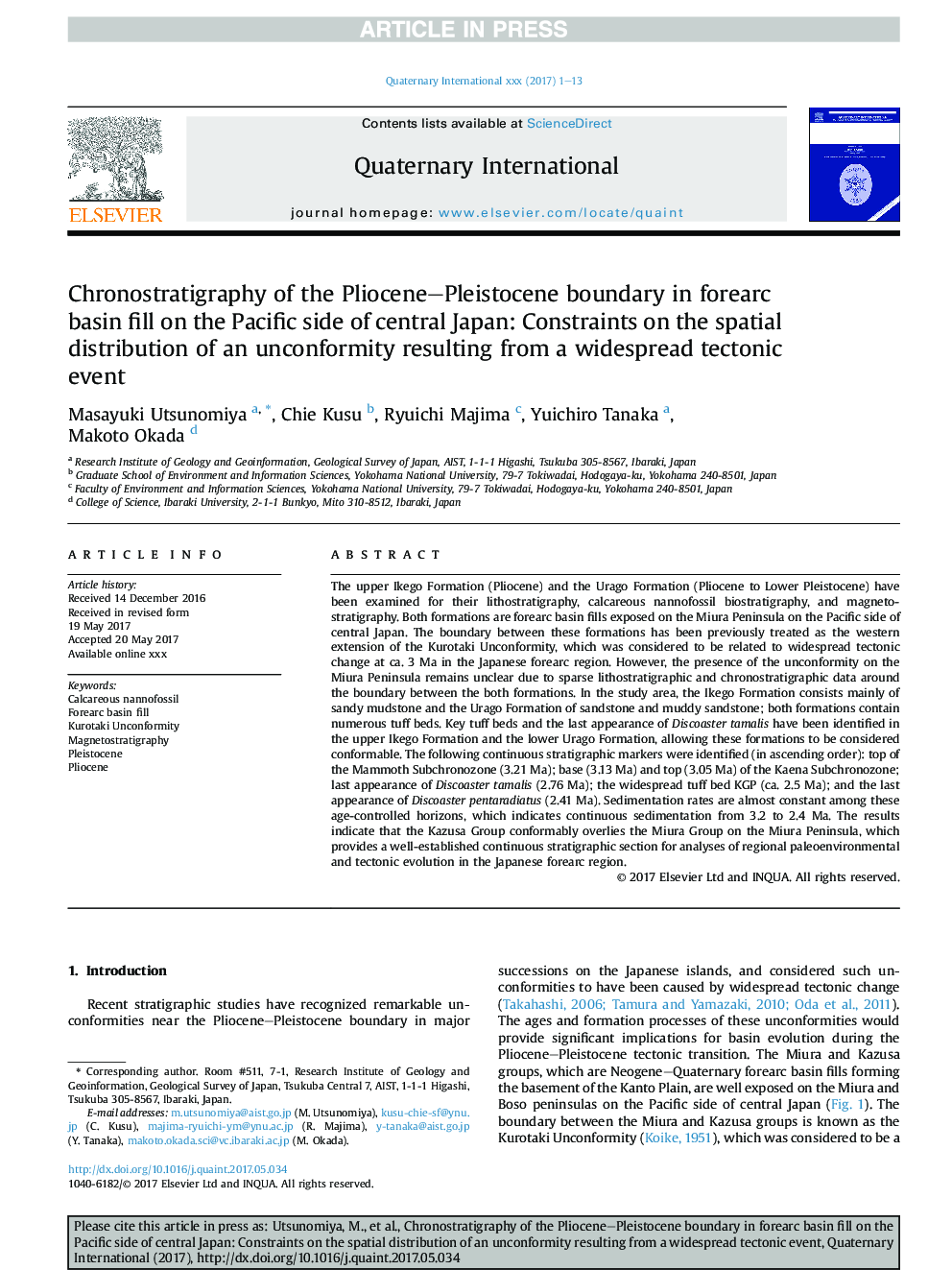| کد مقاله | کد نشریه | سال انتشار | مقاله انگلیسی | نسخه تمام متن |
|---|---|---|---|---|
| 7451295 | 1484067 | 2017 | 13 صفحه PDF | دانلود رایگان |
عنوان انگلیسی مقاله ISI
Chronostratigraphy of the Pliocene-Pleistocene boundary in forearc basin fill on the Pacific side of central Japan: Constraints on the spatial distribution of an unconformity resulting from a widespread tectonic event
دانلود مقاله + سفارش ترجمه
دانلود مقاله ISI انگلیسی
رایگان برای ایرانیان
کلمات کلیدی
موضوعات مرتبط
مهندسی و علوم پایه
علوم زمین و سیارات
زمین شناسی
پیش نمایش صفحه اول مقاله

چکیده انگلیسی
The upper Ikego Formation (Pliocene) and the Urago Formation (Pliocene to Lower Pleistocene) have been examined for their lithostratigraphy, calcareous nannofossil biostratigraphy, and magnetostratigraphy. Both formations are forearc basin fills exposed on the Miura Peninsula on the Pacific side of central Japan. The boundary between these formations has been previously treated as the western extension of the Kurotaki Unconformity, which was considered to be related to widespread tectonic change at ca. 3 Ma in the Japanese forearc region. However, the presence of the unconformity on the Miura Peninsula remains unclear due to sparse lithostratigraphic and chronostratigraphic data around the boundary between the both formations. In the study area, the Ikego Formation consists mainly of sandy mudstone and the Urago Formation of sandstone and muddy sandstone; both formations contain numerous tuff beds. Key tuff beds and the last appearance of Discoaster tamalis have been identified in the upper Ikego Formation and the lower Urago Formation, allowing these formations to be considered conformable. The following continuous stratigraphic markers were identified (in ascending order): top of the Mammoth Subchronozone (3.21 Ma); base (3.13 Ma) and top (3.05 Ma) of the Kaena Subchronozone; last appearance of Discoaster tamalis (2.76 Ma); the widespread tuff bed KGP (ca. 2.5 Ma); and the last appearance of Discoaster pentaradiatus (2.41 Ma). Sedimentation rates are almost constant among these age-controlled horizons, which indicates continuous sedimentation from 3.2 to 2.4 Ma. The results indicate that the Kazusa Group conformably overlies the Miura Group on the Miura Peninsula, which provides a well-established continuous stratigraphic section for analyses of regional paleoenvironmental and tectonic evolution in the Japanese forearc region.
ناشر
Database: Elsevier - ScienceDirect (ساینس دایرکت)
Journal: Quaternary International - Volume 456, 15 October 2017, Pages 125-137
Journal: Quaternary International - Volume 456, 15 October 2017, Pages 125-137
نویسندگان
Masayuki Utsunomiya, Chie Kusu, Ryuichi Majima, Yuichiro Tanaka, Makoto Okada,